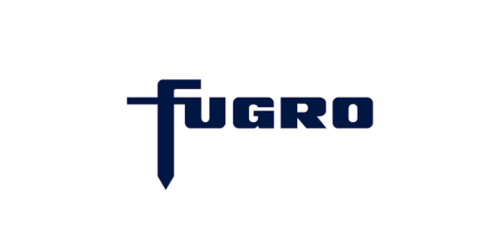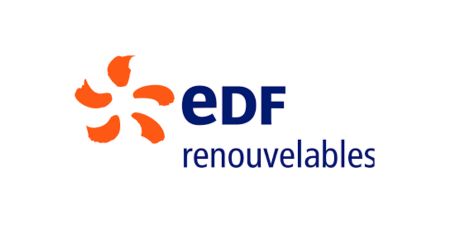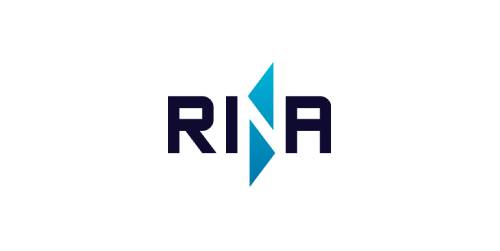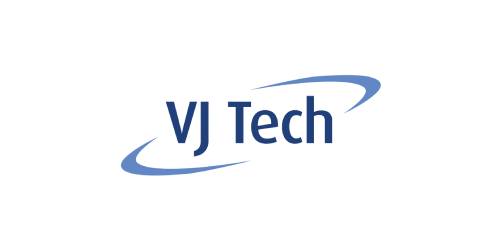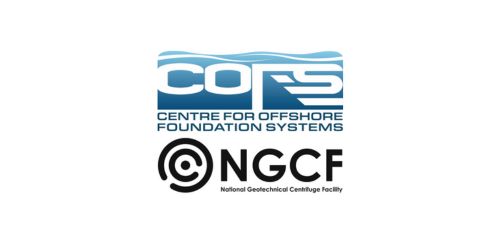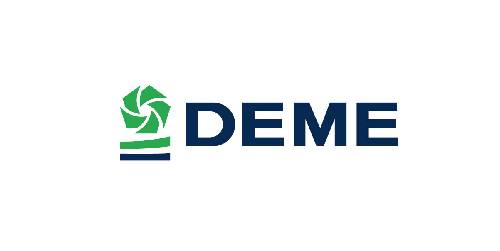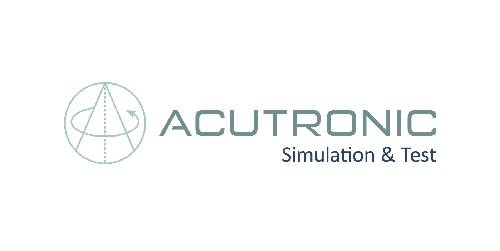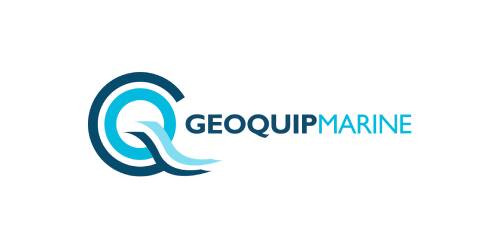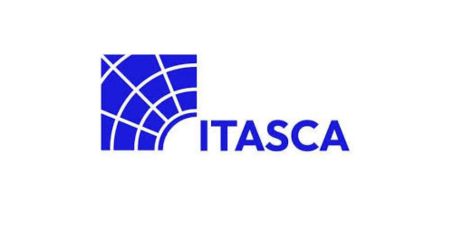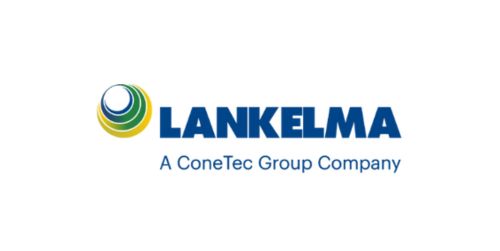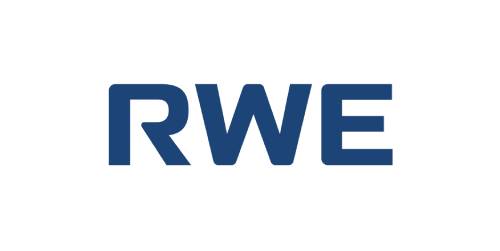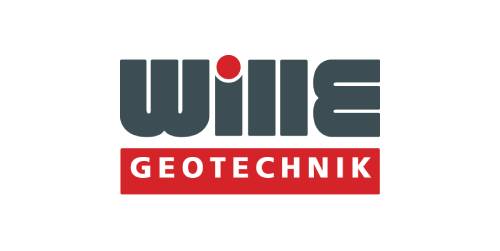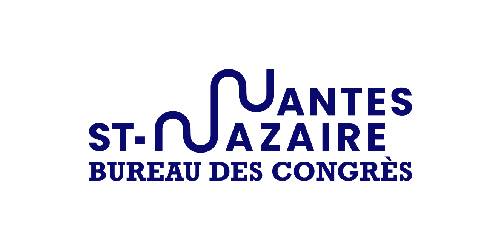 5TH ISFOG NANTES 2025 KEYNOTES
5TH ISFOG NANTES 2025 KEYNOTES
McClelland Lecture Keynote

The paper, the written version of the 7th ISSMGE McClelland Honor Lecture, documents and shares the learnings from the field performance of full-size offshore foundations under installation and operation loads. It details the events that led to the buckling of driven piles at the Valhall field during installation. It compares the predicted and measured performance of floating mobile drilling rig anchors and mooring systems, jackets, and free-standing caissons to North Sea and Gulf of Mexico extreme environmental loads. It shows that the predicted performance of these structures is consistent with the field observations, if modern approaches to foundation modelling are used.
In addition, rather than focusing on natural geohazards as is often the case in the literature, the paper addresses anthropogenic geohazards by publishing two case histories where deepwater seafloor instabilities were triggered by human activities. Hard grounds and seafloor alterations resulting from drilling activities and the hazard they pose to subsea foundations are also discussed.
Short biography:
Philippe is a Senior Advisor with bp in Houston, TX, USA. He has 31 years of industry experience in offshore geotechnics. He is a member and past chair of the ISSMGE TC 209 committee on offshore geotechnics and chairs the API RG7 committee on geotechnical and offshore foundations. He co-chaired the 4th International Symposium on Frontiers on Frontiers in Offshore Geotechnics in Austin, Texas. Philippe has published more than 60 articles in scientific conferences and journals. He has been a guest speaker or keynote speaker at numerous conferences and delivered the CFMS 2019 Coulomb lecture and the Texas A&M 2021 Buchanan lecture. In 2015, the United States Board on Geographic Names agreed to name an underwater site in the Gulf of Mexico « Jeanjean Basin » to honor Philippe and his « substantial contribution to the advancement of geotechnical and geological knowledge of the seafloor of the Gulf of Mexico. »
Symposium Keynotes
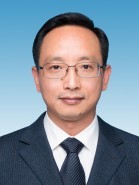
With the rapid economic growth and the urgent mission of carbon reduction of China, the demand for offshore wind energy has been growing enormously. Compared to the conditions in North Sea, the offshore wind turbine (OWT) foundations in China are facing two additional challenges: harsher environmental loadings (e.g., extreme sea state under typhoon) and more challenging ground conditions (e.g., very soft clay, extremely hard rock), with higher potential of dynamic catastrophes. The trend of upsizing OWT is likely to further aggravate the risk. Under these scenarios, the conventional approaches of foundation design and installation become inadequate, hindering widespread development of offshore wind farms in China.
This keynote lecture presents recent advances by the authors’ interdisciplinary team in developing foundation design theory and installation techniques, which have made it possible for offshore wind developments in severe environmental conditions of China waters. It consists of four main parts that include paired topics and practical examples.
Part I focuses on modelling of the extreme sea state under typhoon. The full typhoon track, mean wind profile, turbulence intensity, typhoon wind spectrum, zonation of extreme typhoon wind speeds are obtained by advanced numerical modelling supplemented with field measurements. The distributions of extreme significant wave height and storm surge level are estimated for different return periods, while the typhoon wave and storm surge hazard zones are obtained based on the analysis of historical typhoon events.
Part II describes advanced laboratory characterization and constitutive modelling of marine soils (e.g., structured and gassy marine clays, widely graded silts). The in-situ behavior of marine soils, including anisotropy, cyclic accumulation, rate- and temperature-dependency, are described in a unified way through new constitutive laws. Proper identification of internal variables and consideration of evolving fabric anisotropy are shown to be vital to the unified modelling of constitutive behavior of marine soils.
Part III presents research supporting safe yet economical design of OWTs foundations in typhoon-prone area with soft soil. Failure mechanisms and soil-structure interaction (SSI) models for major types of foundations (e.g., monopile, axially loaded pile, monopod and tripod foundations, anchors with mooring lines) covering broad ranges of water depths are systematically derived. The dynamic SSI models, substructure flexibility, and nonlinear mooring system are then implemented to develop a nonlinear flexible-rigid multi-body modeling approach, based on the principle of virtual work. This has led to the development of Zwind, an aero-elastic multi-body dynamics software that broadens the foundation modelling capacities of the existing counterparts (i.e. OpenFAST, Bladed, HAWC2).
Part IV outlines novel techniques which greatly improve feasibility of foundation installation in very soft or extremely hard seabed. Special attentions are paid to maintain the verticality of monopile and large-diameter monopod, and to enable pile installation into hard rock overlain with soft soils. Precise verticality control of monopile (without transition piece) and large monopod are addressed, respectively, by inventing a double-layer pile holding device and by proposing a multi-compartment suction-regulating approach. Pile installation in hard rock overlain with soft soil is achieved with the aid of casing and jet grouting that maintain well-bore stability of soft soil, and tailored high-performance drilling mechanism that enables pile socketing into hard rock with strength up to 120 MPa.
The concluding section identifies the pressing scientific and technical issues which remain to be resolved, with particular emphases placed on floating OWTs.
Short biography:
Dr Lizhong Wang is a Distinguished Professor and vice-president of Zhejiang University. His research focuses on modelling of marine soils with application to offshore geotechnics. Prof. Wang has contributed to the foundation design for more than 50 major offshore wind projects in China with challenges arising from difficult ground conditions and extreme sea state under typhoon. He is the author of over 260 journal papers. He was selected into the list of China’s Most Cited Scholars by Elsevier, World’s Top 2% Scientists list (career-long impact) by Sandford University, and an Honoree of 2022 Fredlund Award by the Canadian Geotechnical Society.
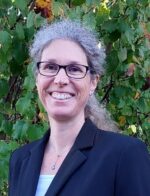
The first ISFOG conference 20 years ago featured a keynote on suction caissons for wind turbines. What have we learnt and how has the landscape evolved since then? Key questions have been addressed for suction buckets in sand around the required suction and importantly post installation performance. Concerns included significant loosening of the soil plug during the suction installation that may affect the in-service performance. Due to the predominant vertical push-pull mechanism between the individual suction buckets supporting a jacket substructure, the tensile capacity has received significant attention together with considerations of the drainage response and of course the response to cyclic loading in particular into tension. The cyclic loading history is important, which has been shown for suction bucket jackets as well as single suction buckets (monopods). With offshore wind turbines moving into deeper water and regions with different soil conditions around the world, the focus is again on suction bucket installation strategies and post-installation performance under cyclic loading, with innovation in modelling techniques and availability of field data enabling more precise prediction with increased confidence – or posing more questions than before?
Short biography:
Britta Bienen is a Professor of offshore geotechnical engineering at the University of Western Australia. With a decade of experience in offshore wind, her research focuses on foundation and anchoring solutions. The 2020 Australian Academy of Science John Booker medal recipient is actively involved in the development of international guidelines (ISO, InSafeJIP, J-REG JIP) and has brought the public engagement initiative OffshoreWind4Kids to Australia.
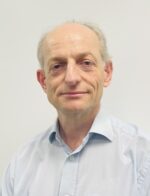
Pile free-fall is a hazard to successful foundation design in the offshore environment. Simplistically, pile free-fall is considered a risk when a ‘hard layer’, sufficient to support the self-weight of a pile is underlain by a ‘soft layer’ which cannot. Once the pile is driven through the ‘hard layer’ it then drops uncontrollably (‘free-falls’) until eventually the soil strength has increased sufficiently to arrest the fall. This paper will reveal more complex behaviour, where soil with no obvious ‘hard over soft’ stratigraphy still results in uncontrollable free-fall. The applicable soil mechanics revolve around transitioning drainage conditions, combined with remoulding and entrapped water leading to low skin friction, allowing large drops in some cases. A comprehensive dynamic pile free-fall model will be presented capturing all the key behaviours. In addition, the modelling of typical free-fall arrestors, involving constrained venting through the pile top will also be explored. The main hazard with such devices is plug failure and the modelling of such behaviour will also be presented. This paper will provide guidance on a key risk that is not adequately appreciated by industry and on critical parameters that should be investigated to establish whether pile free-fall may be a risk or not.
Short biography:
Carl has over 35 years’ experience, principally in the offshore wind and oil and gas industries. He is currently the Technical Director of Fugro Geoconsulting in Perth, and prior to the acquisition by the Fugro Group, was an Executive Director of Advanced Geomechanics since 1998. Carl’s expertise covers a wide field with particular expertise in geotechnical engineering, offshore and onshore geomechanics, advanced numerical analysis, calcareous soils, pile foundations, bucket foundations, foundations in soft rocks and seismic engineering. He has also been responsible for the detailed design of foundations for numerous major structures both offshore Australia and elsewhere in the world. Carl has been at the forefront in the development of many state-of-the art design methods, and he is also an expert in the application of advanced numerical analysis methods to the solution of complex engineering problems.
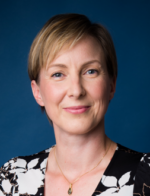
French coasts offer a large variety of geological contexts ranging from soft sediments in the Mediterranean sea to basalt offshore Brittany. The first awarded offshore wind projects were all concerned by rocky formations including weak chalk (with various flint contents), limestone, calcarenite and metamorphic formations. Each of these projects had to tailor solutions for foundation design and installation. Gravity based structures were selected as WTG’s foundation type on Fecamp’s chalk whereas jackets with driven piles were considered on the Treport’s chalk formations. Jackets with drilled and grouted piles were adopted on the seabed dominated by the Neoproterozoic and Lower Palaeozoic rocks of the bay of St Brieuc. Monopiles were considered for projects offshore Saint Nazaire, Noirmoutier and Courseulles, all involving large diameter drilling operations in carbonated rock.
The purpose of this keynote paper is to describe the soil and rock conditions prevailing on the French coasts and highlight the challenges encountered for the WTG developments. Various aspects will be discussed including site investigations, foundation type selection, foundation installation and performance. International recommendations for the design of offshore foundation in rock being very poor, specific R&D programs have been conducted such as onshore pile tests in representative rock conditions or large-scale laboratory tests. Innovative solutions were also developed by contractors to adapt the pile installation technique to the different configurations.
Short biography:
Elisabeth PALIX is EDF Renewables’ Offshore Technical Lead for the APAC region. She has over 20 years of experience in the Offshore Industry with the last ten years focused on offshore renewable energy within EDF Renouvelables. She has experience in site investigation, foundation design and foundation installation for Oil & Gas and renewable projects. Her experience cover a large range of ground conditions from deep water soft soils to limestone. She brought her expertise on the first three French offshore wind projects which are now under operations/advanced construction phases. Those projects involved gravity based foundations on chalk, drilled and grouted monopiles and drive/drilled/drive piles. She is a member of the TC209 and has been involved in several key R&D projects (e.g. PISA, SOLCYP+, Unified CPT-based methods…).
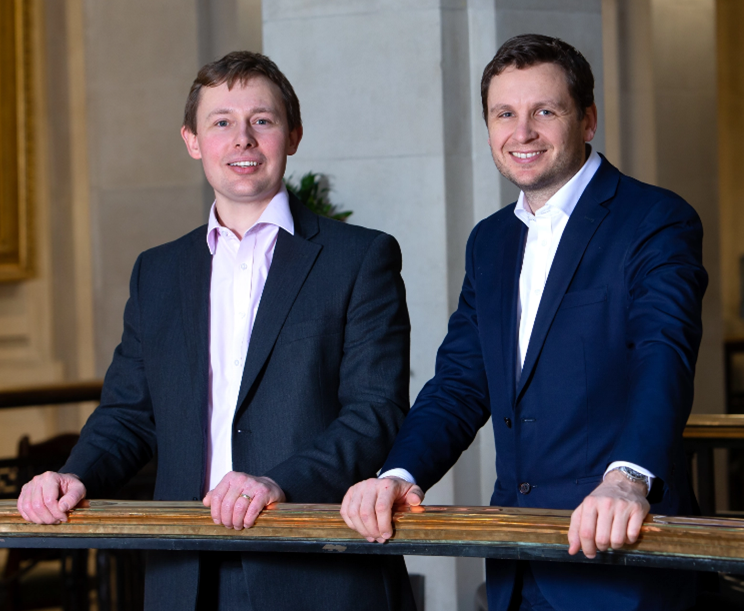
In the past two decades, the geotechnical community has significantly shaped the design of offshore wind farms, predominantly with positive economic impacts. Christian and Alistair have been leaders in this evolution, engaging in highly complex technical developments and addressing the commercial challenges of integrating these innovations into practical offshore wind projects. This keynote will delve into their journey of intertwining technical progress with entrepreneurial ventures. Starting as pioneering engineers at Ørsted, they later founded and expanded Wood Thilsted into a global leader in offshore windfarm design. This keynote will further explore the ongoing challenges that remain in this dynamic field.
Short biography:
Alistair Muir Wood and Christian LeBlanc Thilsted are the co-founders of Wood Thilsted, a global leader in offshore wind engineering. Alistair, CEO, brings over a decade of geotechnical expertise from Ramboll and Ørsted, with a focus on project strategy and asset integrity. Christian, CTO, is a pioneer in offshore wind development, renowned for developing advanced engineering software for turbine foundations. Since establishing the company in 2015, they have revolutionised the industry, delivering some of the world’s largest offshore wind farms more efficiently and at reduced cost. Under their leadership, Wood Thilsted achieved B Corp status, underscoring its commitment to sustainable innovation.

Submarine landslides represent a substantial hazard to offshore and coastal infrastructure. They may range greatly in scale, from local slope failures that may impact nearby structures, to giant landslides giving rise to major consequences in the far field. To assess and mitigate potential induced risk, it is important to understand and quantify related geophysical processes, the landslide dynamics, as well as secondary effects such as tsunamis. In this presentation, we will first present examples of major submarine landslides and describe their characteristics, supplemented with examples of events originating onshore. We will then outline methods to assess submarine landslide hazards, including the geophysical characterization as well as evaluations of regional geotechnical stability, and triggering possible release of landslide scenarios and corresponding probability. Furthermore, we present models for landslide dynamics, and how these may be used for analyzing the run-out distance, impact on structures, and tsunami generation. To this end, concrete geohazard studies will be used throughout the presentation to exemplify the applications of the methods, mainly from the presenter’s own project experience. Finally, we will give an outlook from a different angle, discussing how research from adjacent fields can contribute to future hazard assessment, e.g. by incorporating micromechanics and granular dynamics, machine learning, or digital twin technologies.
Short biography:
Finn Løvholt is researcher at the Norwegian Geotechnical Institute that has worked with geohazards for more than 20 years. His main expertise is related to numerical modelling and hazard analysis related to tsunamis, submarine, and subaerial landslides. Løvholt has participated in about 10 EU funded research projects related to geohazards, including major submarine landslide related projects such as SLATE and the ongoing POSEIDON project. Furthermore, he has extensive consulting experience as landslide and tsunami modeller in projects related to submarine landslide hazards, both out for the offshore industry and for public infrastructure developers.
Bright Spark Lectures

Floating offshore wind energy holds immense potential for harnessing wind resources in deep waters. However, this technology is hampered by significant cost challenges, particularly in constructing large platforms and mooring systems. Shared anchors present a cost-effective solution, though they come with increased failure risks, necessitating careful design. Research on best practices for shared anchor design under multi-directional cyclic loads remains limited, particularly in developing robust experimental databases for validating and calibrating design methods and numerical models. This Bright Spark lecture will present findings from three recent research projects examining anchor piles subjected to multi-directional cyclic lateral loads. The studies include centrifuge model tests that uncover the critical mechanisms driving pile response to multi-directional lateral loads and their impact on conventional uni-directional loading design methods. The results emphasise the influence of multi-directional loading on the cyclic ratcheting of foundation response and inform the validation of a simplified macro-model for industry use. The paper also addresses how to achieve computational efficiency without compromising calculation accuracy. This research not only advances the design of mooring systems for floating wind turbines but also enhances the design of monopiles to better withstand cyclic multi-directional loads caused by misaligned wind and wave forces.
Short biography:
Dr. Christelle Abadie graduated in 2011 with a double degree from ENSTA Paris and an MSc in advanced structural design. She pursued a PhD at the University of Oxford, focusing on offshore geotechnics and developing a novel model for monopile foundations under cyclic lateral loading. She then continued research as lead PDRA on the PISA2 project at Oxford. In 2018, Dr. Abadie became an Assistant Professor at the University of Cambridge, where she was the youngest member of the permanent academic staff in Engineering and the first woman fellow in Engineering at Fitzwilliam College. She also served as the academic representative for the British Offshore Engineering Society, the UK representative for the European Large Geotechnical Institutes Platform, and a corresponding member of TC209. In 2023, she joined the University Gustave Eiffel, where she focuses on advancing next-generation offshore wind turbine foundations. She continues her role with TC209 and serves as lead editor and co-general secretary for the upcoming ISFOG conference. As an active member of the offshore geotechnical community, Dr. Abadie collaborates closely with leading offshore wind energy companies and was recently invited to author the foundation chapter for the ICE book on civil engineering aspects of offshore wind farms.

Offshore wind energy is abundant and has enormous potential in the future. At present, offshore wind energy development is mainly concentrated in very shallow areas, usually using fixed foundations such as monopiles or jackets. However, with the advancement of offshore wind energy towards deep and distant seas, floating wind turbines have more advantages. Floating wind turbines require a mooring system composed of mooring lines and anchors for positioning, so the safety of the mooring system is crucial for the floating wind turbines. This presentation focuses on the interaction between the mooring system and seabed, and explores related geotechnical engineering issues. The main content includes: (1) introduction to the floating wind turbine, its mooring system, and the new concepts of shared mooring line and sheared anchor; (2) Simulation about dynamic interaction between mooring lines and clay seabed; (3) Simulation of formation process of seabed trench induced by moving mooring line; (4) Assessment on influence of seabed trenches on suction anchor in sand; (5) Integrated analysis for floating wind turbines coupled with mooring system considering the embedded mooring line.
Short biography:
Shengjie Rui, Marie Curie Research Fellow. I am working at the Norwegian Geotechnical Institute (NGI) in Norway, engaged in research related to marine new energy development, offshore geotechnics, and ocean engineering. I led 1 European Union funding (MSCA Postdoctoral Fellowship 2022 with full marks) and published over 50 papers (including 45 peer-review papers). I served as a corresponding/nominated member of the International Society for Soil Mechanics and Geotechnical Engineering (ISSMGE) TC104 physical modelling, TC209 offshore geotechnics and TC213 scour and erosion. I was appointed as the Associate Editor of the SCI journal KSCE Journal of Civil Engineering. I was invited as Guest Editor in ‘Frontiers in Marine Science’, ‘Sustainability’ and ‘Journal of Marine Science and Engineering’ journal. In addition, I also served as a reviewer for more than 30 SCI journals.
OPEN MIND LECTURES
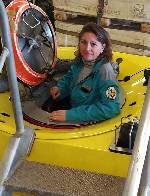
Hidden from our eyes, the deep ocean, far from us, aphotic, under pressure, cold, has long been considered as a vast desert of darkness, sometimes populated by awful sea monsters. However, it becomes, particularly in inactive hydrothermal contexts, the covetousness of developed and emerging countries for its resources in terms of biodiversity and minerals dedicated to greenhouse gas emissions reduction. However, the deep ocean is not a desert at all…. The protection of the deep seabed, the largest biome on the planet, is a major challenge for future generations. Covering more than 70% of the Earth’s surface, with an average depth of -3800 m, the ocean encompasses more than 80% of the volume of seawater, produces about 50% of the atmospheric oxygen and absorbs ≈25% of anthropogenic CO2.
Within the framework of structuring programs for sustainable development (e.g. the UN Ocean Decade, calls for the climate (COP26), France 2030), it becomes urgent to acquire and share, through holistic approaches, solid knowledge baselines with regard to the diversity of geological systems, habitats, taxonomic and functional biodiversity, at open and interconnected ocean scales.
We are implied in deep-sea exploration, linking geography, geology, geochemistry, biology and social and governance approaches. Along the Mid Atlantic Ridge, by 3600 meters depth, we focus on the TAG hydrothermal field, an area of choice for studying the geo-biodiversity of so-called old inactive sulfide deposits. Beside, we follow the young and volcanic Snake Pit hydrothermal field. Separated by 300 kms North-South of ocean ridge and a major transform fault shifting this axis by 150 km East/West, these hydrothermal sites show similarities in terms of biological diversity, raising the question of species exchanges and connectivity. Recent exploration cruises revealed geochemical evidences for unknown active vent sites located between TAG and Snake Pit and further south. These sites constitute potential relays for the organism dispersal, a key point in the overall understanding of ecosystems and their relationships along ridge segments and even along Atlantic Ocean.
The France 2030 project LIFEDEEPER intend to develop new approaches, combining in situ, in vivo, and lab experimentations, modeling and qualitative research in social sciences to disentangle the geological, geochemical and biological natural functioning of deep ocean ecosystems. In addition, legal and political analysis of international regulatory regimes and public outreach are proposed to get knowledge and to share it with the most.
Ultimately, in a multidisciplinary approach, we aim to acquire definitions of reference ecological profiles and preservation strategies in the current context of the growing interest in deep mineral resources for the carbon-free and digitized world economy. We aim to propose solutions to allow future informed guidelines and decision-making and raise awareness of the most.
So let’s go deep and see what’s going down there!
Short biography:
Agronomist engineer INA-PG 91 (Agro Paris tech today), I completed my thesis at Ifremer in ‘General and Applied Microbiology’ (Paris 7 Doctoral School) related to research and development of thermostable DNA polymerases for biotechnological applications (in vitro DNA replication). I was then recruited in 1997 at Ifremer at the Microbiology of Extreme Environments Laboratory (LMEE, located in Brittany close to Brest). I first developed molecular biology approaches applied to marine microbial species identification and studies of the diversity of microbial communities of diverse samples. Attracted by both Geology and Biology, in 2000 I set up a multidisciplinary research project in the laboratory focusing on symbioses in deep-sea extreme environments.
My main interests are multidisciplinary studies in deep-sea environments, focusing on the interactions between fauna, microbial communities and their mineral environment as well as the technological developments mandatory for these studies. These studies allowed me to support my HDR (Habilitation to Direct Research) in 2007.
Head of the BICOSE campaign in 2014, then BICOSE2 (2018) and BICOSE3 (2023) and also of the Nautile ESSNAUT2017 test campaign , I am involved in studies related to the sustainability and resilience of deep-sea ecosystems, their functioning, the study of life-cycles, the protection of these ecosystems and the dissemination of knowledge to as many people as possible in a context of strong anthropogenic pressure for the mineral and biological resources of the deep seabed. Since 2022, I have been leading the ANR-France 2030 LIFEDEEPER project linking experimental sciences in geosciences and biology, human and social sciences, politics and knowledge sharing.
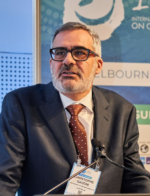
Wave energy is approaching technical maturity and will see first commercial deployment within the next 5 years, on a trajectory to potentially reach several hundreds of GW of installed capacity by 2050. This open mind lecture will explore the potential of wave energy, the technologies being developed, and the challenges and opportunities faced by the wave energy communities. This will be illustrated by a presentation of the M4 Wave Energy Project in Albany, Western Australia.
Short biography:
Christophe Gaudin obtained in PhD is soil Mechanics from the Ecole Centrale Nantes in 2002 and move to the University of Western Australia in 2003 where he is currently a professor and Director of the UWA Oceans Institute. After a career in developing centrifuge modelling solutions for a broad range of geotechnical problems, Christophe has shifted his interest to multidisciplinary projects in ocean renewable energy. He is currently leading the M4 wave energy project in Albany, WA and sits as Vice Chair of the Ocean Energy Systems Technical Committee within the International Energy Agency.

Exhibitors & Sponsors:
information
For further information, please contact:
AS connect évènement – Stéphanie Delbecq
Tel. +33 (0)2 40 20 15 95



